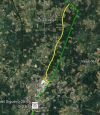Hi, I have five days to walk a part of the Camino and I am deciding on which route to choose. I will arrive in Santiago next weekend. I walked previously the full Camino Frances, the Camino Finisterre and the first part of the Camino del Norte.
This time, I am choosing between Camino Ingles, Camino Portogues and Finisterre.
I have already been to Finisterre, it was beautiful and I would like to repeat it at some point.
I read about the Camino Ingles. I am very used to hike so I think I can do it in five days from Ferrol, I am more worried about the following.
1)is it easy to reach Ferrol by Santiago?
2)I don't like to walk on asphalt. Is it still scenic or is it more "urbanise" compared to other Caminos?
The Camino Portoguese seems beautiful but I don't know much about it. How does it compare to the Camino Ingles? I would like something that is not too crowded but where there are still people to talk with. Also, it would be nice if there are good food options and good nature to see etc.
This time, I am choosing between Camino Ingles, Camino Portogues and Finisterre.
I have already been to Finisterre, it was beautiful and I would like to repeat it at some point.
I read about the Camino Ingles. I am very used to hike so I think I can do it in five days from Ferrol, I am more worried about the following.
1)is it easy to reach Ferrol by Santiago?
2)I don't like to walk on asphalt. Is it still scenic or is it more "urbanise" compared to other Caminos?
The Camino Portoguese seems beautiful but I don't know much about it. How does it compare to the Camino Ingles? I would like something that is not too crowded but where there are still people to talk with. Also, it would be nice if there are good food options and good nature to see etc.













